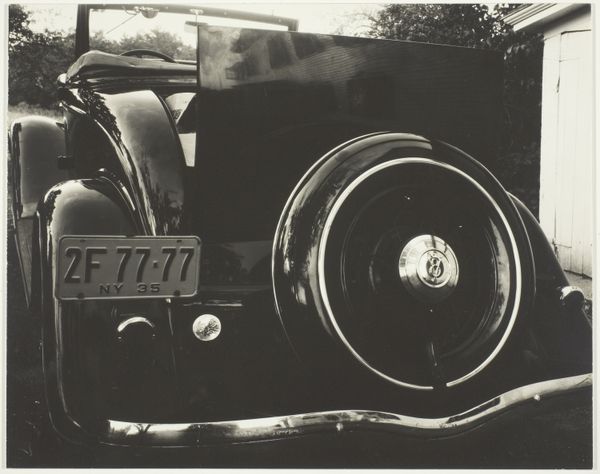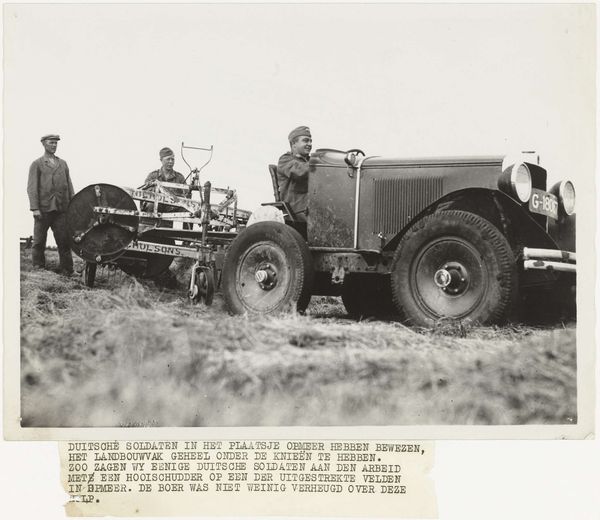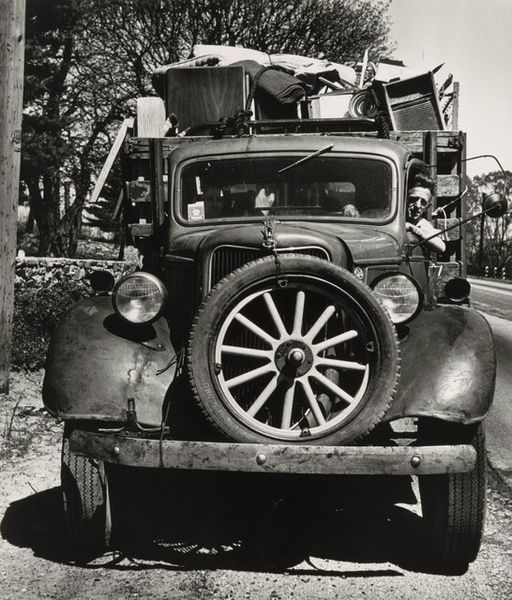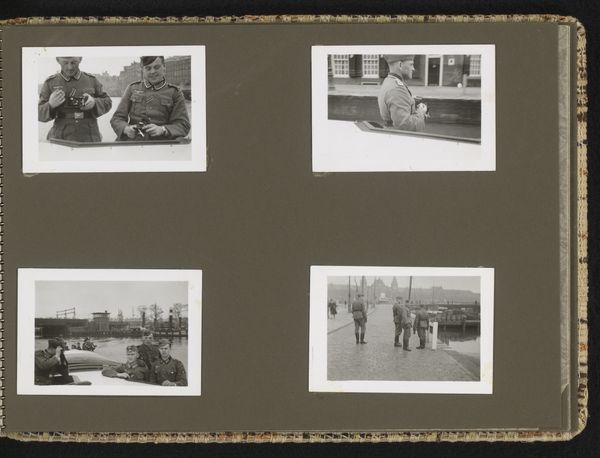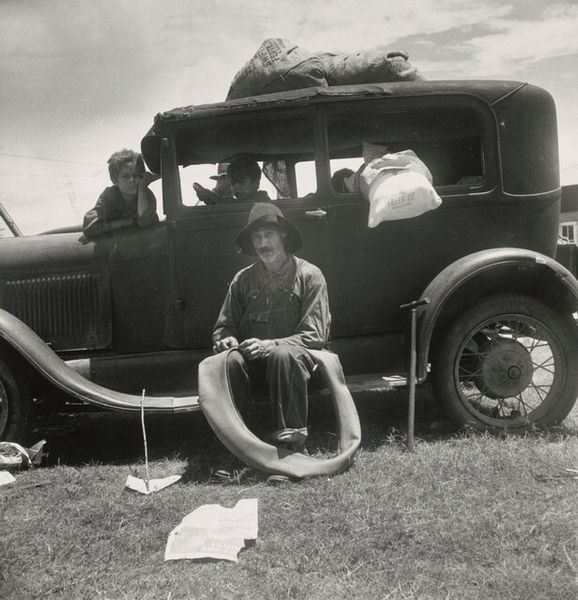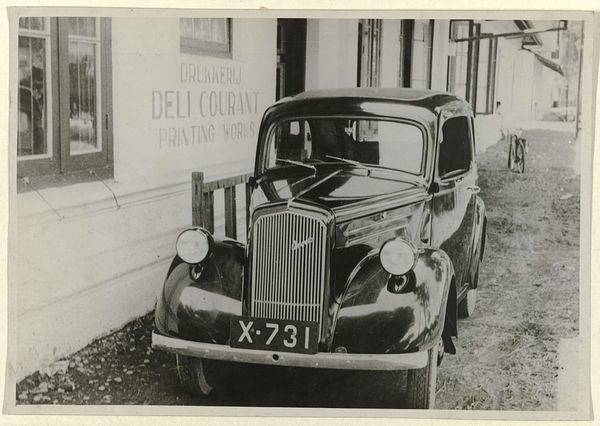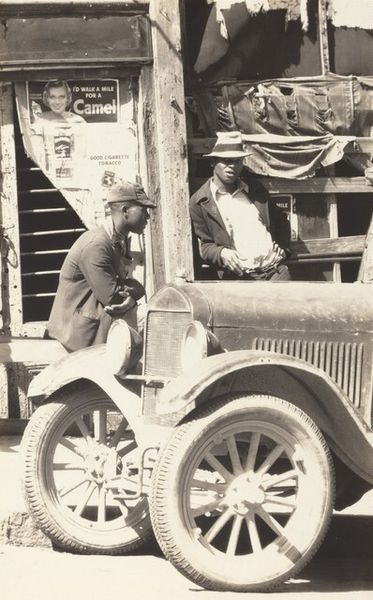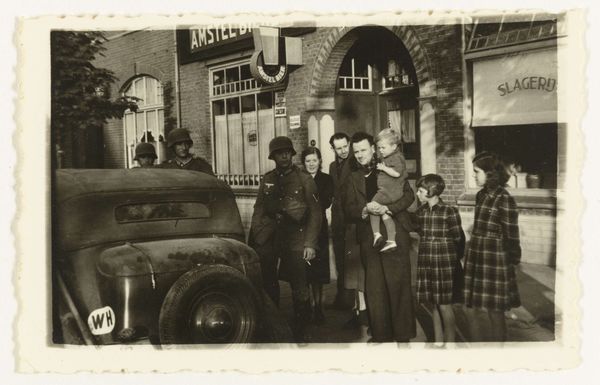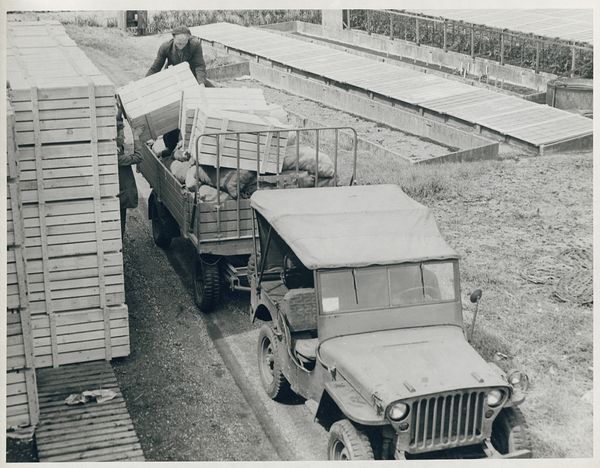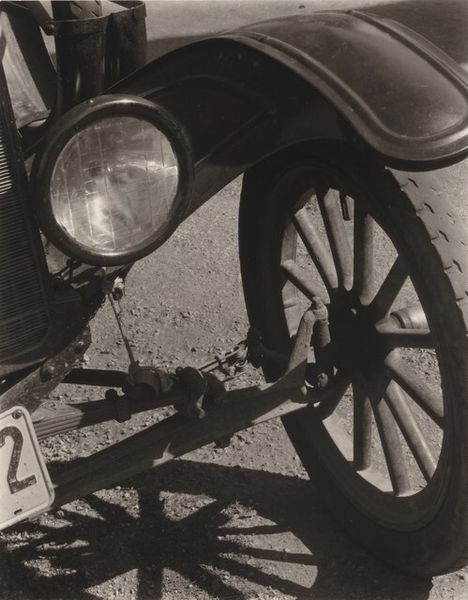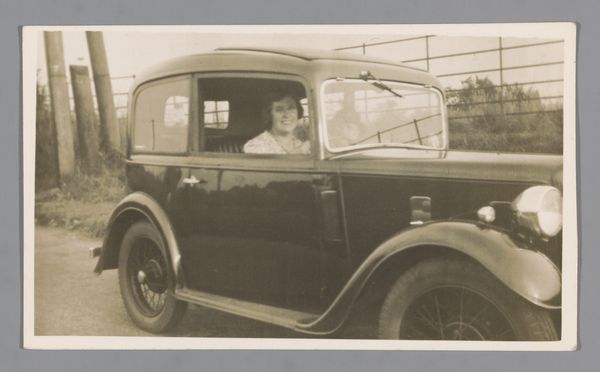
Prinses Beatrix, prinses Margriet en prins Bernhard op het vliegveld Teuge, na terugkeer uit Canada Possibly 1945 - 1948
0:00
0:00
photography, gelatin-silver-print
#
portrait
#
landscape
#
archive photography
#
photography
#
historical photography
#
gelatin-silver-print
#
monochrome photography
#
monochrome
Dimensions: height 18 cm, width 24 cm
Copyright: Rijks Museum: Open Domain
Curator: This gelatin-silver print, possibly from between 1945 and 1948, is titled "Prinses Beatrix, prinses Margriet en prins Bernhard op het vliegveld Teuge, na terugkeer uit Canada," and comes to us from the archives of Anefo, now residing at the Rijksmuseum. Editor: My first impression is one of somber homecoming. The monochrome lends a stark, almost heavy feel to what should be a celebratory moment, wouldn't you agree? Curator: Indeed. We see the figures positioned among vehicles. We must remember that the young Princesses spent the war years in Canada. This image speaks to their return, the re-establishment of the Dutch monarchy post-occupation. The presence of both a formal car and a military vehicle signifies the complexities of their return. Editor: It strikes me that both vehicles are grounded realities; transport that depends upon raw materials, labor. Look at the treads on that army truck – it's meant for traversal, work. While the polished car signals power, doesn't it still require just as much, if not more, labor for upkeep, extraction? Curator: Absolutely. The image plays on those power dynamics, doesn't it? Consider the women of the royal family - their privilege, of course, but also the enforced expectations of them and the burdens they bore, navigating monarchy, gender, and nationality at a tumultuous moment. We also might reflect on who isn't pictured— the people and material conditions that facilitate this return. Editor: And the very nature of photography as a medium. Silver gelatin printing required both chemical and human labour to produce the final image, so it is vital to think about who had access to image production and who could be represented at that time. Curator: The composition pushes us to consider access and privilege. Who could afford their story to be documented in such a medium? Editor: Exactly. Looking at the grain and the contrast makes me appreciate the craft inherent to its production. Curator: Thinking through those layered lenses of power, materiality, and visibility, even a seemingly simple photograph can prompt important conversations. Editor: Absolutely. Reflecting on production alongside political context transforms our understanding of this piece.
Comments
No comments
Be the first to comment and join the conversation on the ultimate creative platform.

